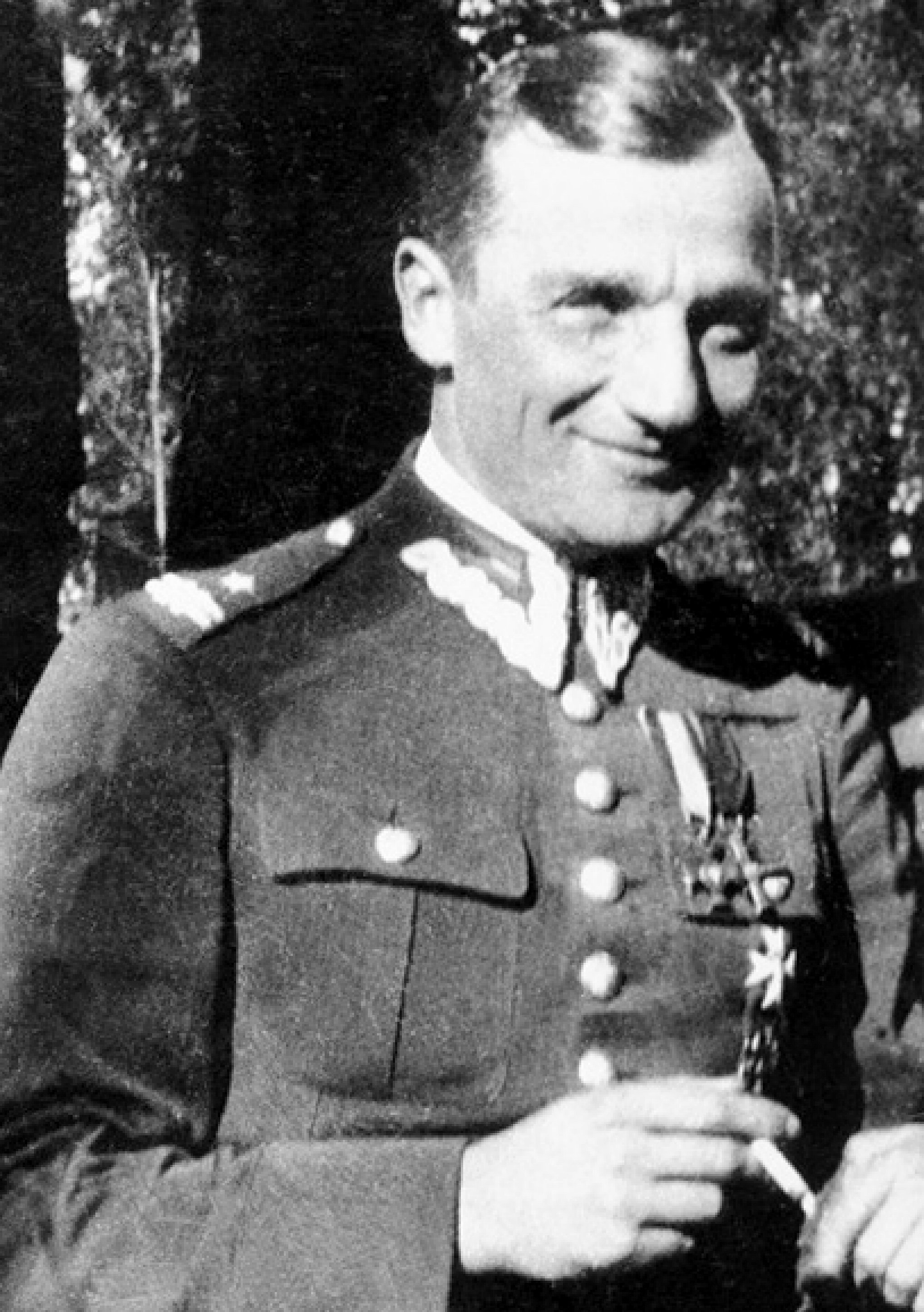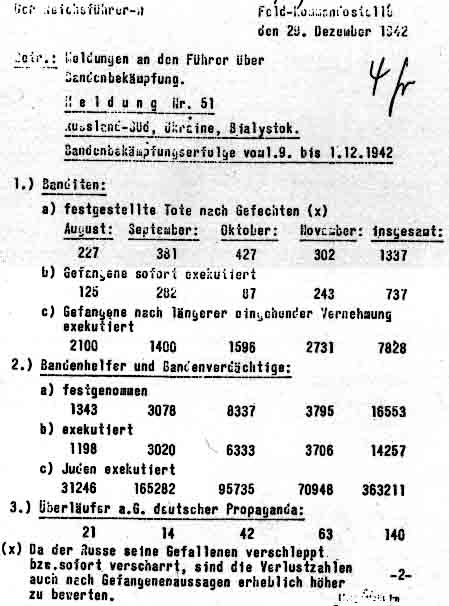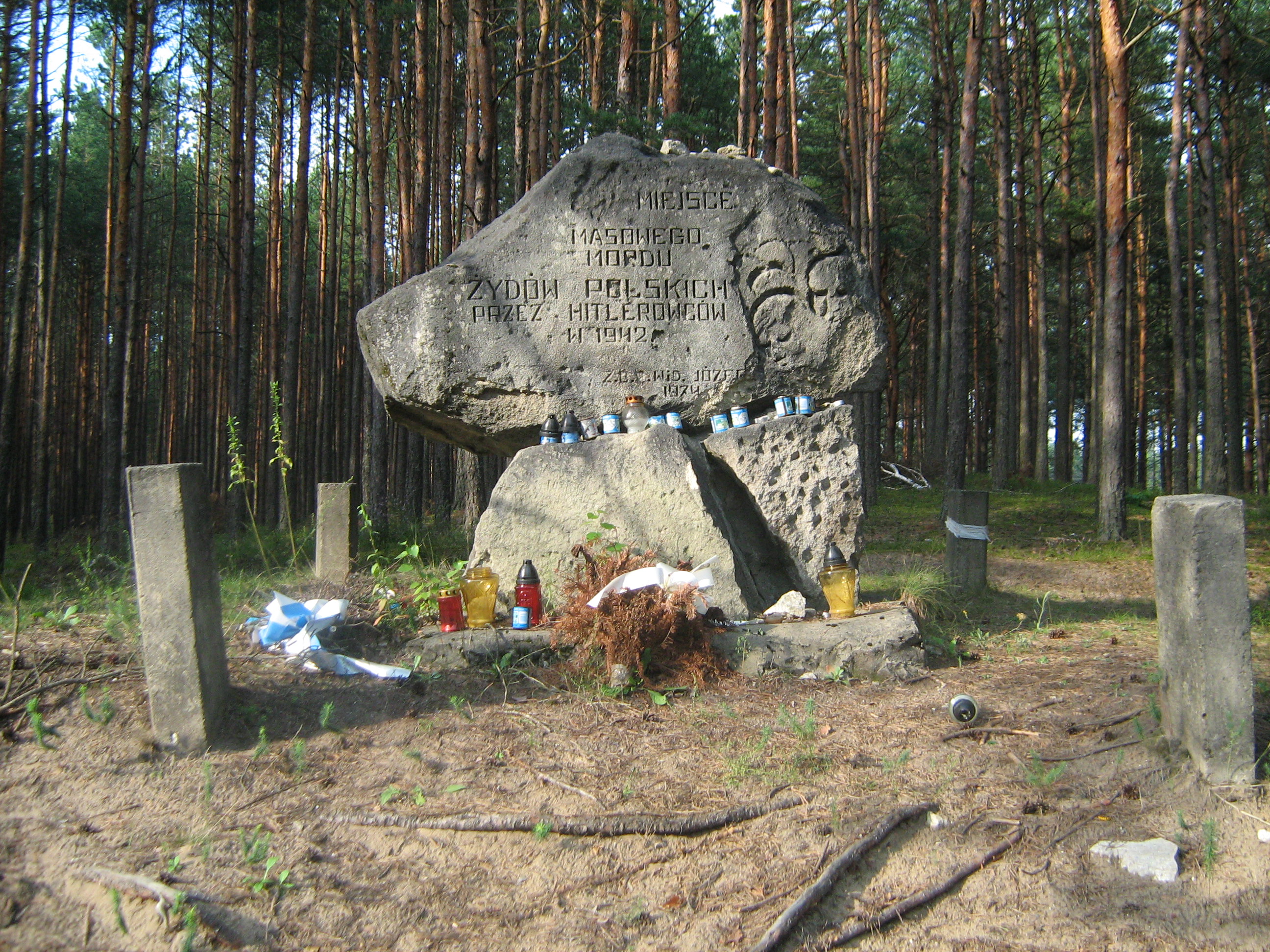|
Battle Of Osuchy
The Battle of Osuchy ( pl, Bitwa pod Osuchami; sometimes referred to as the Battle at Sopot River, pl, Bitwa nad Sopotem ) was one of the largest battles between the Polish resistance and Nazi Germany in occupied Poland during World War II, a part of the Zamość Uprising. It took place near the village of Osuchy in the Solska Forest on 25–26 June 1944 during the German anti- partisan (Operation Hurricane II). The battle ended with the defeat of the local resistance forces that suffered heavy casualties. Background The Nazi terror since 1942 - part of the Generalplan Ost - in the Zamość region in occupied Poland had led to the creation of many active resistance units. Polish partisans (from Armia Krajowa, Bataliony Chłopskie and Armia Ludowa) - with the aid of some Soviet partisans - made the region almost ungovernable to the Germans. The German garrison in the key city of Biłgoraj was mostly cut off from land communication with other forces; the town of Józefów was ... [...More Info...] [...Related Items...] OR: [Wikipedia] [Google] [Baidu] |
Operation Tempest
file:Akcja_burza_1944.png, 210px, right Operation Tempest ( pl, akcja „Burza”, sometimes referred to in English as "Operation Storm") was a series of uprisings conducted during World War II against occupying German forces by the Polish Home Army (''Armia Krajowa'', abbreviated ''AK''), the dominant force in the Polish resistance movement in World War II, Polish resistance. Operation Tempest's objective was to seize control of German-occupied cities and areas while the Germans were preparing their defenses against the advancing Soviet Red Army. Polish underground civil authorities hoped to take power before the Soviets arrived. A goal of the Polish Government-in-Exile, in London, was to restore Poland's 1939 borders with the USSR, rejecting the Curzon Line border. According to Jan. M. Ciechanowski, "The [exiled] Polish Cabinet believed that by refusing to accept the Curzon Line they were defending their country's right to exist as a national entity. They were determined that ... [...More Info...] [...Related Items...] OR: [Wikipedia] [Google] [Baidu] |
Leśni
(, "forest people") is an informal name applied to some anti-German partisan groups that operated in occupied Poland during World War II, being a part of Polish resistance movement. The "forest people" groups comprised mostly people who for various reasons could not operate from the communities they lived in and had to retreat into the forests. Unlike most organized resistance groups, such as the Home Army, the "forest people" formed a sort of standing army, as opposed to regular partisan units that gathered shortly before an operation and afterward returned to their homes. After the 1939 fall of Poland The first such groups formed in 1939, shortly after the invasion of Poland. Membership comprised mostly marauders from the Polish Army and other people who evaded arrest by the new Nazi or Soviet authorities. In March 1940 the partisan unit of the first guerrilla commander in the Second World War in Europe - Henryk Dobrzański "Hubal" - completely destroyed a battalion of ... [...More Info...] [...Related Items...] OR: [Wikipedia] [Google] [Baidu] |
Borowiec, Lublin Voivodeship
Borowiec is a village in the administrative district of Gmina Łukowa, within Biłgoraj County, Lublin Voivodeship, in eastern Poland. It lies approximately east of Łukowa, south-east of Biłgoraj, and south of the regional capital Lublin Lublin is the ninth-largest city in Poland and the second-largest city of historical Lesser Poland. It is the capital and the center of Lublin Voivodeship with a population of 336,339 (December 2021). Lublin is the largest Polish city east of t .... The village has a population of 56. References Villages in Biłgoraj County {{Biłgoraj-geo-stub ... [...More Info...] [...Related Items...] OR: [Wikipedia] [Google] [Baidu] |
Hamernia
Hamernia is a village in the administrative district of Gmina Józefów, within Biłgoraj County, Lublin Voivodeship, in eastern Poland. It lies approximately east of Józefów, east of Biłgoraj, and south-east of the regional capital Lublin. During the Polish census of 2011 Polish census of 2011 ( pl, Narodowy Spis Powszechny 2011) was a census in Poland taken from 1 April to 30 June 2011. Results Population by voivodeships Source: National/ethnic identity The Census included two questions regarding national and ethn ..., the village was measured to have 343 inhabitants and was the fourth largest town in Gmina Józefów. References Villages in Biłgoraj County {{Biłgoraj-geo-stub ... [...More Info...] [...Related Items...] OR: [Wikipedia] [Google] [Baidu] |
Nikolai Prokopiuk
Nikolai or Nikolay is an East Slavic variant of the masculine name Nicholas. It may refer to: People Royalty * Nicholas I of Russia (1796–1855), or Nikolay I, Emperor of Russia from 1825 until 1855 * Nicholas II of Russia (1868–1918), or Nikolay II, last Emperor of Russia, from 1894 until 1917 * Prince Nikolai of Denmark (born 1999) Other people Nikolai * Nikolai Aleksandrovich (other) or Nikolay Aleksandrovich, several people * Nikolai Antropov (born 1980), Kazakh former ice hockey winger * Nikolai Berdyaev (1874-1948), Russian religious and political philosopher * Nikolai Bogomolov (born 1991), Russian professional ice hockey defenceman * Nikolai Bukharin (1888–1938), Bolshevik revolutionary and Soviet politician * Nikolai Bulganin (1895-1975), Soviet politician and minister of defence * Nikolai Chernykh (1931-2004), Russian astronomer * Nikolai Dudorov (1906–1977), Soviet politician * Nikolai Dzhumagaliev (born 1952), Soviet serial killer * Nikolai Goc (bor ... [...More Info...] [...Related Items...] OR: [Wikipedia] [Google] [Baidu] |
Górecko Kościelne
Górecko Kościelne is a village in the administrative district of Gmina Józefów, within Biłgoraj County, Lublin Voivodeship, in eastern Poland. It lies approximately north-west of Józefów, east of Biłgoraj, and south of the regional capital Lublin Lublin is the ninth-largest city in Poland and the second-largest city of historical Lesser Poland. It is the capital and the center of Lublin Voivodeship with a population of 336,339 (December 2021). Lublin is the largest Polish city east of t .... The village has a population of 44. References Villages in Biłgoraj County {{Biłgoraj-geo-stub ... [...More Info...] [...Related Items...] OR: [Wikipedia] [Google] [Baidu] |
Janów Forests
Janów may refer to: * Janów, Chełm County in Lublin Voivodeship (east Poland) * Janów, Lublin County in Lublin Voivodeship (east Poland) * Janów, Podlaskie Voivodeship (north-east Poland) * Janów, Gmina Bełchatów in Łódź Voivodeship (central Poland) * Janów, Gmina Zelów in Łódź Voivodeship (central Poland) * Janów, Brzeziny County in Łódź Voivodeship (central Poland) * Janów, Gmina Bedlno in Łódź Voivodeship (central Poland) * Janów, Gmina Oporów in Łódź Voivodeship (central Poland) * Janów, Gmina Góra Świętej Małgorzaty in Łódź Voivodeship (central Poland) * Janów, Łódź East County in Łódź Voivodeship (central Poland) * Janów, Pajęczno County in Łódź Voivodeship (central Poland) * Janów, Gmina Łęki Szlacheckie in Łódź Voivodeship (central Poland) * Janów, Gmina Wolbórz in Łódź Voivodeship (central Poland) * Janów, Rawa County in Łódź Voivodeship (central Poland) * Janów, Skierniewice County in Łódź Voi ... [...More Info...] [...Related Items...] OR: [Wikipedia] [Google] [Baidu] |
Bandenbekämpfung
In German military history, ''Bandenbekämpfung'' (German; ), also Nazi security warfare (during World War II), refers to the concept and military doctrine of countering resistance or insurrection in the rear area during wartime through extreme brutality. The doctrine provided a rationale for disregarding the established laws of war and for targeting of any number of groups, from armed guerrillas to the civilian population, as "bandits" or "members of gangs". As applied by the German Empire and later by Nazi Germany, it became instrumental in the mass crimes against humanity committed by the two regimes, including the Herero and Namaqua genocide and the Holocaust. Emergence Concept and origins According to historian and television documentary producer, Christopher Hale, there are indications that the term ''Bandenbekämpfung'' may go back as far as the Thirty Years' War. Under the German Empire established by Bismarck in 1871 after the Franco-Prussian War—formed as a ... [...More Info...] [...Related Items...] OR: [Wikipedia] [Google] [Baidu] |
Eastern Front (WWII)
The Eastern Front of World War II was a theatre of conflict between the European Axis powers against the Soviet Union (USSR), Poland and other Allies, which encompassed Central Europe, Eastern Europe, Northeast Europe (Baltics), and Southeast Europe (Balkans) from 22 June 1941 to 9 May 1945. It was known as the Great Patriotic War in the Soviet Union – and still is in some of its successor states, while almost everywhere else it has been called the ''Eastern Front''. In present-day German and Ukrainian historiography the name German-Soviet War is typically used. The battles on the Eastern Front of the Second World War constituted the largest military confrontation in history. They were characterised by unprecedented ferocity and brutality, wholesale destruction, mass deportations, and immense loss of life due to combat, starvation, exposure, disease, and massacres. Of the estimated 70–85 million deaths attributed to World War II, around 30 million occurred on th ... [...More Info...] [...Related Items...] OR: [Wikipedia] [Google] [Baidu] |
Józefów, Biłgoraj County
Józefów (; uk, Юзе́фув, Yuzéfuv) also called ''Józefów Biłgorajski'', ''Józefów Ordynacki'' and ''Józefów Roztoczański'', is a town in Biłgoraj County, Lublin Voivodeship, Poland, with 2,436 inhabitants (2006). It lies on the , in historic Lesser Poland, among the hills of Roztocze, and Solska Forest. The distance to Biłgoraj is 24 km, to Zamość 30 km, and to Lublin - 92 km. History The town was founded in the 1720s in a location of the village of Majdan Nepryski. Józefów belonged to the Zamoyski family, and its name honors Tomasz Józef Zamoyski, the 5th Ordynat of the ''Zamość Estate'' (''Ordynacja zamojska''). In 1725, Józefów received Magdeburg rights, with the right to organize nine fairs a year. The town remained within boundaries of the ''Zamość Estate'' until 1939. Due to a convenient location in the middle of the Estate, Józefów quickly developed, becoming a local artisan center. In the late 18th century, however, followin ... [...More Info...] [...Related Items...] OR: [Wikipedia] [Google] [Baidu] |
Biłgoraj
Biłgoraj ( yi, בילגאריי, ''Bilgoray'', ua, Білґорай) is a town in south-eastern Poland with 25,838 inhabitants as of December 2021. Since 1999 it has been situated in Lublin Voivodeship; it was previously located in Zamość Voivodeship (1975–1998). It is located south of Lublin and it is also the capital of Biłgoraj County. Historically, the town belongs to Lesser Poland, and is located in southeastern corner of the province, near the border with another historic land, Red Ruthenia. Biłgoraj is surrounded by a forest, with three rivers flowing through it. Etymology The name of the town probably comes from a hill called Biely Goraj, on which Biłgoraj was founded in the 16th century. Geography Biłgoraj lies in northern part of Sandomierz Basin, near Roztocze. The town is surrounded by Solska Forest, from Roztocze National Park. An average July temperature in Biłgoraj is , an average January temperature . The town is crossed by four small rivers: Biała ... [...More Info...] [...Related Items...] OR: [Wikipedia] [Google] [Baidu] |
Soviet Partisans
Soviet partisans were members of resistance movements that fought a guerrilla war against Axis forces during World War II in the Soviet Union, the previously Soviet-occupied territories of interwar Poland in 1941–45 and eastern Finland. The activity emerged after Nazi Germany's Operation Barbarossa was launched from mid-1941 on. It was coordinated and controlled by the Soviet government and modeled on that of the Red Army. The partisans made a significant contribution to the war by countering German plans to exploit occupied Soviet territories economically, gave considerable help to the Red Army by conducting systematic attacks against Germany's rear communication network, disseminated political rhetoric among the local population by publishing newspapers and leaflets, and succeeded in creating and maintaining feelings of insecurity among Axis forces. Soviet partisans also operated on interwar Polish and Baltic territories occupied by the Soviet Union in 1939–1940, but ... [...More Info...] [...Related Items...] OR: [Wikipedia] [Google] [Baidu] |




